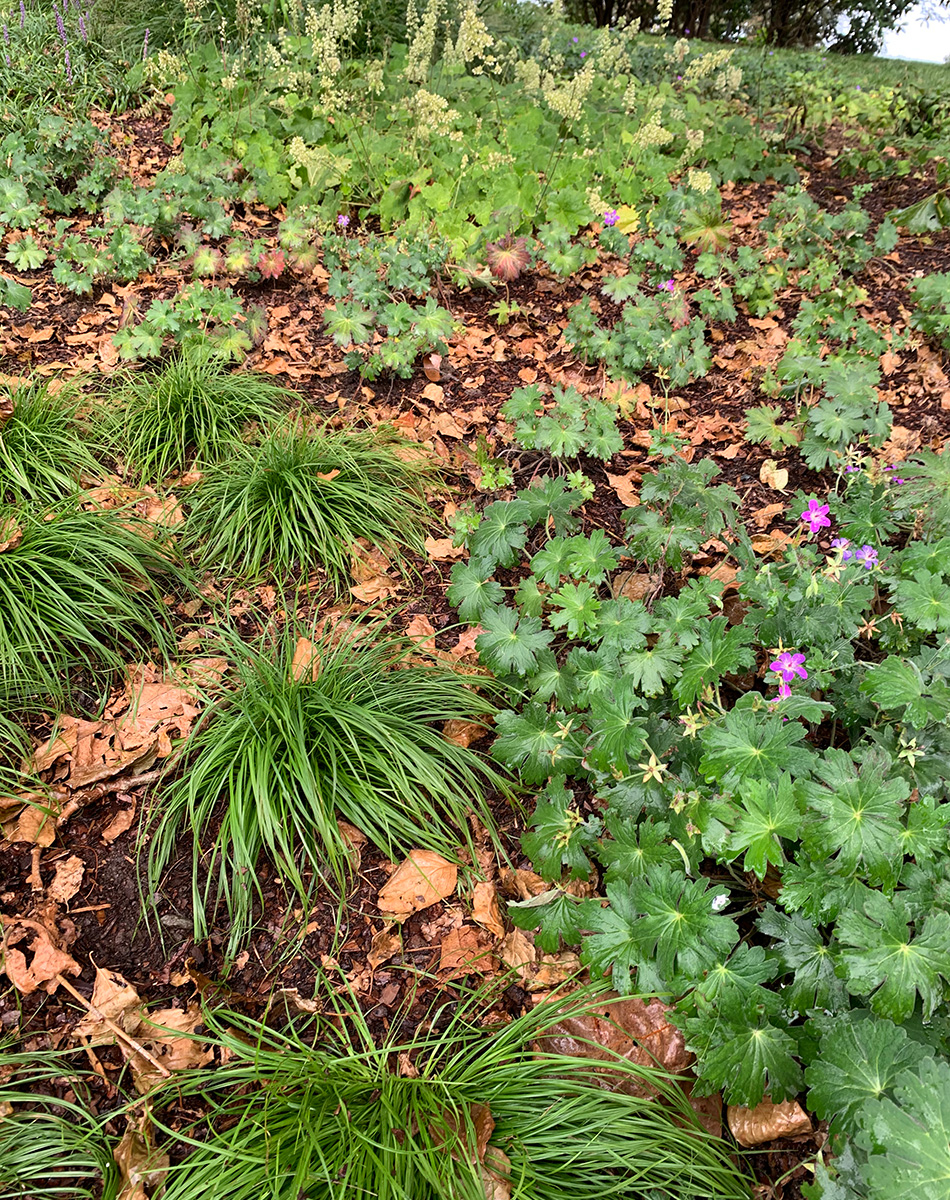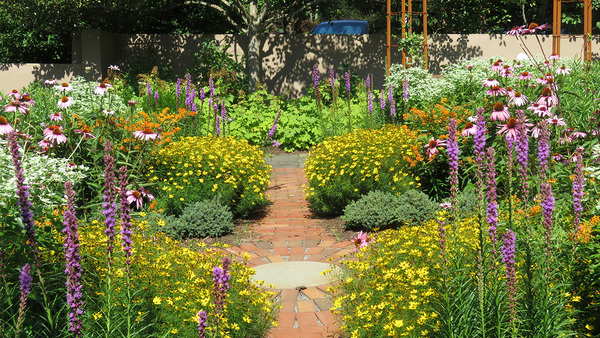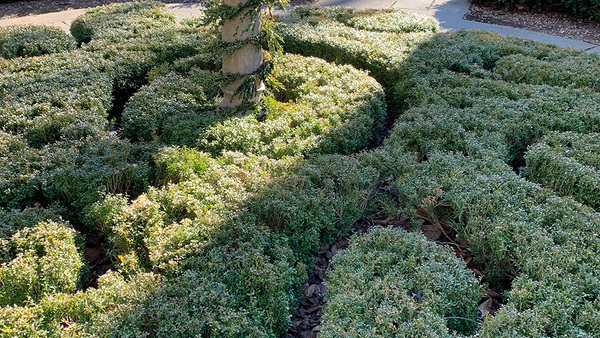
Autumn has arrived in the Mid-Atlantic and with it, beautiful garden colors. As leaves fall and plants start to go to sleep, what do we do? Traditional gardening dictates getting the pruners and loppers out to cut back everything that is not evergreen, removing all the leaves from the lawn and garden, and then kicking all that waste to the curb. However, there are better ways to clean up the garden in the fall that are friendlier to the environment and just plain easier for the gardener. I spoke with garden manager Kelsey Skaroff and project manager Ryan Snyder at GreenWeaver Landscapes in Media, Pennsylvania, about how they approach fall cleanups for their clients. Here are some tips from those conversations.

Leave the leaves
Leaves are a wonderful source of natural mulch and can be left in the garden. If you live in a heavily wooded area, removing some is still a great alternative to stripping all of them away. Kelsey and her gardeners leave as many leaves as possible. They make sure there are enough to act as a layer of mulch without smothering plants or creating a habitat for fungal growth. If the leaf layer is not too thick, the leaves will generally decompose relatively quickly (compared to hardwood mulch) and provide a layer of insulation and a barrier against cool-weather weeds. In the spring, if needed, gently rake the leaves away from any emerging plants.

Mulch mow
Ryan often has his crews mulch mow the leaves on the lawn. This is the process of blowing out leaves, chopping them up, and returning them to the garden. This option is good for those in the habit of cleaning up their leaves and then adding a new layer of mulch in the fall or spring. The home gardener can easily do this by mowing the lawn one last time for the season. Rake or blow out the leaves from the beds and give them a rough chop with the lawn mower. Then return them to the garden. This process will tidy up the garden while leaving organic matter to enrich the soil.

Don’t cut back all perennial growth
Kelsey leaves many perennials standing for the winter in her clients’ gardens. As the company’s designers use at least 75% native plants in their designs, they realize the importance of these plants as sources for food and shelter for insects and animals. For instance, black-eyed Susan (Rudbeckia spp. and cvs., Zones 3–9) seed heads are a food source for the house finch, chickadee, and American goldfinch. While cutting back anything that tends to “melt,” like hostas (Hosta spp. and cvs., Zones 3–9) or daylilies (Hemerocallis spp. and cvs., Zones 3–10), Kelsey believes that letting the garden go through its natural cycle is ecologically critical. She understands it is important for the garden to look great, but she encourages her clients to shift their perspective from thinking fall and winter gardens look messy to viewing gardens as alive in all four seasons. She will recommend or add plants with winter interest. A few standby favorites are winterberry holly (Ilex verticillata, Zones 5–8) for its gorgeous red fruit, redtwig dogwood (Cornus sericea, Zones 3–8) for its colorful stems, and purple coneflower (Echinacea purpurea, Zones 3–9) for its striking winter seed heads.

Eradicate invasives
Fall cleanup is a great time to look for invasive plant species. While gardens are being maintained during the summer, these plants tend to grow on edges of properties and woods. Most are quite easy to spot. Wineberry (Rubus phoenicolasius), burning bush (Euyonomous alatus), and amur honeysuckle (Lonicera mackii) are a few of the most common invasive species here in the Mid-Atlantic. If plants are young, pull or dig them out. If they’re older, cut them back and apply a small amount of concentrated brush killer on the fresh cuts.
While many gardeners want to put the garden to bed in the fall, there is still a living, thriving ecosystem among those spent perennials and layers of leaves. As gardeners, we can find the balance of functional sustainably and beauty.
—Michele Christiano has worked in public gardens for most of her career. She currently works as an estate gardener maintaining a Piet Oudolf garden.
Fine Gardening Recommended Products

Johnny’s Selected Seeds Connecta® Cultivation Kit
Fine Gardening receives a commission for items purchased through links on this site, including Amazon Associates and other affiliate advertising programs.

Gardener's Log Book from NYBG
Fine Gardening receives a commission for items purchased through links on this site, including Amazon Associates and other affiliate advertising programs.

Lee Valley Garden Knife
Fine Gardening receives a commission for items purchased through links on this site, including Amazon Associates and other affiliate advertising programs.



















Comments
Log in or create an account to post a comment.
Sign up Log in